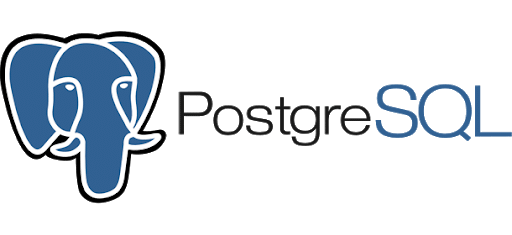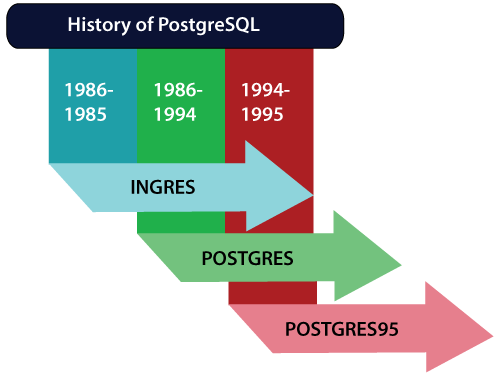Introduction to PostgreSQL
- PostgreSQL, the strong open-source relational database management system (RDBMS) is such that it can be flexible, compliant, and reliable.
- It is a program that is quite strong and is one of the more advanced ones to a great extent.
- Technologies for opening data in various formats which PostgreSQL operates with are the ones that people from individual users to start-ups, and large corporations use to tackle problems related to various data storage and data management needs.
- The data, which is both unstructured and structured, is typically the kind of data that PostgreSQL can tackle by itself without any other third part to deal with.
- The database system also allows the data to be stored in the forms of files, images, and audio, among others.
- The PostgreSQL project is a community-based project with the contributors making it a community project, and the community is thus engaged in continuous development and global support.
- The discursive model of productivity that the project is based on involves close collaboration of developers and users and has made PostgreSQL one of the most advanced database systems, which has – always – the options to be improved due to the increased complexity of data management.

What is PostgreSQL?
- It is the most reliable open-source relation database management system (RDBMS), is based on the relational data structure theory and SQL (Structured Query Language).
- As a database manager, PostgreSQL allows people to save, arrange, restore, and change information in tables and schemes.
- The platform is also characterized by its support for normal relational database facilities including data integrity through constraints, transaction management, and information storage with indexing for quick data retrieval.
- Extensibility and standards compliance are two main factors that make PostgreSQL stand out from many other RDBMS databases.
- In comparison with some other databases, PostgreSQL is customizable in the sense that users can create their custom data types, indexes, or even query languages.
- With its robust SQL compliance, it ensures that the application is compatible with industry standards for relational databases and also incorporates state-of-the-art facilities.
History of PostgreSQL
- In the late 1980s a computer science professor at the University of California, Berkeley, Dr. Michael Stonebraker, a computer scientist, constructed the POSTGRES that later became the PostgreSQL, a database system.
- The main objective was to move beyond existing relational databases.
- For example, had a more complicated data type, such as extensibility and the incorporation of advanced features.
- POSTGRES was designed to solve data management problems through the use of complex data types, a rules system, and more advanced query processing.
- In 1994, POSTGRES was renamed PostgreSQL to emphasize its compliance with SQL, which was the relational database standard at that time.
- The system’s transformation to an open-source, SQL-compliant platform was marked by the first official release of PostgreSQL 6.0 in 1996.
- As time went by, PostgreSQL was able to inject powerful features, such as Multi-Version Concurrency Control (MVCC), table partitioning, synchronous replication, and foreign data wrappers, Making it a flexible and feature-rich database system.
- Over time, PostgreSQL has gained a considerably huge user base, especially from developers who opt for an advanced, open-source RDBMS that unifies reliability, performance, and flexibility.
Key Features of PostgreSQL
PostgreSQL’s strong side in the field of database are going to come from its features. Remember these functions of this DBMS:
1. SQL Compliance and Standards
- It supports a broad set of SQL features and standards, such as joins, subqueries, views, and transactions.
- It follows SQL:2008 standard and also includes additional features like table inheritance, user-defined types, and stored procedures.
2. Extensibility
- Extensibility is one of the main strengths of PostgreSQL.
- The ability of users to add their functions, types of data, as well as moving operators to Postgres allows a flexible and secure work environment for the application.
- It may also be mentioned that the system supports procedural languages such as PL / pgSQL, Python, Perl, and even C that makes it highly adaptable for developers.
3. ACID Compliance
- Full support for Atomicity, Consistency, Isolation, and Durability (ACID) transaction properties.
- These properties make sure the transactions in a database are processed reliably.
- It boasts atomic transactions, consistency checks, isolation levels, and durable data storage besides these ACID properties.
- It is thus true that PostgreSQL is definitely a good choice for application where a high degree of data integrity is essential.
4. MVCC (Multi-Version Concurrency Control)
- It has been equipped with MVCC technique that effects several transactions to carry out without overlapping of one another.
- Through the MVCC approach, there is no data inconsistency generated in a database even under high load and concurrent access conditions.
5. Indexing
- It can be implemented with various advanced indexing technologies like B-tree, hash, GiST (Generalized Search Tree), and GIN (Generalized Inverted Index) that result in a greater performance of query execution processes.
6. Foreign Data Wrappers (FDWs)
- FDWs can be used with PostgreSQL to retrieve data, which poses a great challenge to databases due to storage systems or file systems behaving as native tables.
- This particular functionality is what makes PostgreSQL very adaptable making it possible to be integrated with other data systems.
7. Replication and High Availability
- It upholds just two types of replication. Users have the choice of hosting high-availabilities in it.
- Also, they offer logical replication which gives the users an option of more flexible and granular data replication setups.
8. Full-Text Search
- This comes with an in-built feature to work full-text search out,o you can search efficiency for a large amount of text.
- This is especially perfect for using in the web of search engines and systems for content management.
9. Data Integrity and Security
- It has always solid data integrity features e.g foreign keys, check constraints, and triggers with encryption and authentication functions as a part of the data to secure and ensure its consistency.
- Besides, the powerful encryption and certification mechanisms are fully exploited by the foreign data.
Advantages of PostgreSQL
1.Open Source and Free:
- It is the open-source software that is free, open to everyone, and that can be used without licenses from the developers and companies.
- The PostgreSQL fork is under the PostgreSQL License, a permissive open-source license that is roughly the same as the MIT License.
2.Extensibility:
- The major advantage is its capability to expand its configuration.
- It, for a simple reason, gives the possibility to the user so define new data types, new operators, functions, and even languages.
- This also means that it can be tailored to support very uncommon use cases, such as geospatial data or complex mathematical operations.
3.ACID Compliance:
- It is fully conversant with the ACID (Atomicity, Consistency, Isolation, Durability) properties that serve as a seal of approval for the system that data integrity is guaranteed during transactions.
- Thereby, making it a perfect candidate for uses requiring that the data be reliable and consistent.
4.Support for Advanced Data Types:
- The PostgreSQL database is a real whiz when it comes to data manipulations.
- It can comfortably manage complex arrays, JSON, hstore, and some other custom types to represent complicated data structures that are not supported by many other RDBMS systems.
5.MVCC (Multi-Version Concurrency Control):
- Postgres uses MVCC to allow multiple transactions to occur simultaneously without interfering with each other.
- This improves the performance and concurrency of high data while maintaining the data consistency.
6.SQL Compliance:
- PostgreSQL abides by SQL standards, it lets you run standard SQL queries and also supports the elements that belong to widely acceptable relational database standards.
7.Replication and High Availability:
- It comes with support for a number of replication techniques, among them are synchronous and asynchronous replication.
- It also provides failover support, which is indispensable for production systems in the production environment in order to ensure high-availability.
8.Full-Text Search:
- It has full-text search built into it and it is by default able to conduct specific file scans which is best to use in such application like content management systems.
9.Security Features:
- It is known for its reliable security features, which include elements such as encryption, SSL/TLS support for secure connections, role-based access control, and row-level security.
Disadvantages of PostgreSQL
1.Performance at Scale:
- It is easily one of the toughest databases when it comes to performance, but it still may pose some downsides when it comes to scaling up for bigger data or high concurrency computing compared to more specifically focused databases like Oracle or MySQL.
- For instance, NoSQL databases such as MongoDB might be the source of better answers to the big data and also can store unstructured data.
2.Complex Configuration and Management:
- Due to the fact that,it is a very flexible and extendible system, the configuration and maintenance will be very hard for new developers and DBAs.
- Even from the start, when the setup of replication or partitioning, which is advanced, may require some in-depth knowing and specific skills will cause such sense.
3.Limited Commercial Support:
- It has a large robust community, but businesses that need more advanced support and SLAs will be an issue for it with the lack of commercial support.
- Besides, companies that offer their services of commercial support such as EnterpriseDB, just to give an example, counterbalance the problem
4.EcoSystem Scale Compared to Commercial Databases:
- It is growing in ecosystem, however sometimes it may lack some of its exclusive tools, features, or services otherwise distributed by other industrial databases.
- For instance, probably, some enterprise applications or systems might be better integrated with databases like Oracle or SQL Server.
5.Resource Consumption:
- It is heavy in resources, especially when it comes to handling complicated queries, large data sets, or a high concurrency environment.
- Thus, the need for advanced hardware such as purely cloud-based systems is possible, which can cost extra compared to the usage of lighter tools like MySQL handling the smaller applications that require fewer resources.
6.Lack of Some Enterprise Features:
- Though PostgreSQL comes with a great number of features which are mostly applicable in most areas, it still does not have some of the advanced features that are often standard in some commercial RDBMS platforms such as automatic database tuning, or enterprise-level backup and recovery solutions.
7.Learning Curve:
- For beginners, the extensive feature set and flexibility of PostgreSQL can be quite intimidating.
- While the documentation is great, getting a complete grip on PostgreSQL involves more time and effort compared to other simpler database systems.

